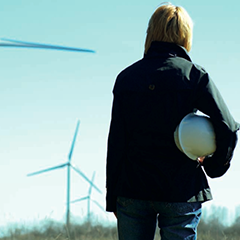Wind turbines are large, complex pieces of machinery, similar to those manufactured in the car and aerospace industries. But are our employees – at every stage of the supply chain – being supported by similar and correct Occupational Safety & Health (OSH) procedures? And what are the risks they being presented with? PES investigates…
OSH through the lifecycle of a wind turbine
Wind energy workers both onshore and offshore will be exposed to OSH risks throughout the entire lifecycle of a wind turbine. By using the lifecycle model (design and development, manufacture, transport, construction, operation, associated infrastructure, repowering/life extension, decommissioning and recycling) to frame the review, it is possible to visualise the various complexities involved in any of the tasks or activities being undertaken on both onshore and offshore wind farms.
Design and development
Design and development is a critical stage in minimising the potential for OSH issues throughout the lifecycle of wind turbines. Discussion between designers and contractors can often result in a number of engineered solutions and more efficient operations that will minimise the amount of time workers spend on activities at all stages of the wind turbine’s lifecycle, for example employing remote diagnostics to reduce service and maintenance frequency.
Minimising the need to visit turbines decreases the number of operational maintenance hours offshore, and therefore the overall risk to personnel. Some of the newer wind turbine concepts, such as floating platform technologies and airborne wind turbines or kits, can potentially reduce falls from height and musculoskeletal issues because they can simplify some of the more difficult tasks (EWEA, 2010; EERA, 2010; Byon, 2010).
Some components on wind turbines have longer design lives, which, again, will improve the OSH of workers simply because they spend less time working in and around wind turbines on unscheduled maintenance tasks. Ultimately, there will be situations when a visit is unavoidable; the design should therefore allow technicians to safely and quickly deal with any issues.




























